How to use way less plastic in the kitchen
10 high-impact ways to reduce single-use plastic.
All of life, it seems, comes in plastic.
Cheap and lightweight, the material’s dominance makes sense; yet, as we’re learning, it is virtually unrecyclable, seemingly detrimental to human health, and environmentally unsustainable in terms of both production and waste (plastic is made with fossil fuels).
For the past three years or so, I have been working on reducing my consumption of single-use plastics. I am not close to zero waste, but if I were to guess, I’ve reduced at least 50%, maybe even up to 75% of the single-use plastic I used to use with the methods below. I’ve focused on plastics in the kitchen, not just because this newsletter is called Home Food, but because, if you are like me, that is where the overwhelming majority of our plastic waste originates from.
I think we’ll begin to learn more about the health effects of plastics in the coming years, although evidence is mounting that microplastics affect the nervous, digestive, and reproductive systems. It’s nearly impossible to be completely plastic-free, and I still use plastic. Still, I do try to limit my exposure to heated plastics, as well as “nonstick” materials and other products containing PFAS. I never microwave in plastic, avoid hot and acidic foods in plastic, and try to eat and cook with glass, ceramics, cast iron, or steel. Plastic can also enter the body and the environment via air and synthetic fibers. Although it’s impossible to avoid microplastics altogether, minimizing exposure is a good thing.
This newsletter contains affiliate links—meaning I may earn a small commission from items you buy, at no cost to you.
A realistic low-plastic framework
Begin with the easiest thing.
Work your way up to the hard things slowly. Start with a swap that is easy for you, and once that feels normal, move on to more difficult items. Plastic is everywhere, and it’s essential to make these habits feel sustainable and doable.
For me, that was bringing a reusable cup to the coffee shop. I became accustomed to it quickly, and I leveraged that momentum to focus on high-effort and high-volume plastics.
Focus on high volume.
While all low-plastic efforts are positive, I find it silly to focus on products like low-waste deodorant while simultaneously discarding plastic bottles and individually wrapped snacks on a daily basis. How many deodorant tubes do you go through in a year?
Start by examining your garbage and recycling bins, and note what is most prevalent. Online shopping mailers, drink bottles, or oat milk cartons? That’s where you should focus.
Use this as an opportunity to reduce consumption.
The most effective way to reduce plastic use is to purchase fewer new items. Opt for shopping locally or secondhand whenever possible, and reconsider quick Amazon purchases. And while I recommend various products below, the best low-waste and low-plastic product is the one you have. It’s easy to get carried away with fun, new products, but take a moment to determine if you need it and if you’d use it.
10 high-impact ways to reduce single-use plastics in your life and kitchen
1. Stop using plastic produce bags.
Be ungovernable. I throw loose produce directly into a cart or basket, sometimes balanced on top of a box of pasta. If that grosses you out, you can bring your compostable bags ($13) or reusable fabric bags ($14). You could also ask your local grocery store if they’d consider stocking compostable or unbleached paper bags.
2. Bring a cup to the coffee shop.
If you’re a coffee or tea drinker, this is one of the easiest, most high-impact ways to reduce single-use plastic. It does require going inside a coffee shop, rather than a drive-thru, but IRL interaction at a local coffee shop has other benefits.
If bringing your cup to the coffee shop only happens half the time, that’s fine. If every person who reads this started bringing their reusable cup to the coffee shop half of the time, it would have a greater impact than if 1% adopted a zero-waste approach and the other 99% continued to consume at their typical rate! Our power is at scale.
Chances are, you already have a travel coffee cup. The best coffee cup is the cup you already have. If it’s a little beat up, that’s all the more charming. If you don’t have one, I would recommend the drinkware company Stanley.
My to-go coffee shop order is typically an iced cortado with oat milk, which I nearly always get prepared in my Stanley wine tumbler ($20). I like this cup and lid, and the insulated stainless steel has the added benefit of keeping your coffee hot or iced for much longer than single-use plastic cups and paper cups lined with plastic. Be warned, it does not fit in a car’s cup holder. The 10oz tumbler ($25) does, though, or if you’re a latte person, the 14oz beer pint ($26) is also a great option.
I tried a collapsible coffee mug, but it sucked. The lid wouldn’t seal. If I’m bringing my cup on a day out, I usually shake out the ice into a garbage bin or street curb and throw the cup in my tote.
3. Replace plastic wrap with dinner plates, parchment paper, or cloth.
Instead of plastic wrap, I use dinner plates as lids for mixing bowls. An East Fork dinner plate ($48) covers a KitchenAid mixing bowl perfectly.
Most doughs, like tortilla or pie, can be rested and wrapped in crumbled parchment paper ($6). For buns and focaccia, I’ve used an upside-down sheet pan as a lid.
4. Switch to plastic-free home goods.
Even so-called “eco” products come packaged in plastic containers or wrapped in non-recyclable plastic. I’ve tried many different brands over the years, and I’ve found the products listed below to be the most consistent. Some of them are more expensive than their plastic counterparts, but my other low-plastic efforts have certainly saved me money, so it all evens out.
Dishwasher detergent:
The best dishwasher detergent I’ve found is this powder by Dirty Labs ($22). The packaging is plastic-free, and unlike other powder detergents, it effectively cleans our dishes.
Dish soap:
We use a diluted Dr. Bronner’s ($18 for the lower-plastic refill carton) in a reused glass bottle with an oil pourer top ($6).
Paper towels:
I like Who Gives a Crap’s ($22) and Grove’s paper towels ($16). We use paper towels for gross jobs, such as the kitchen sink or bathroom, and then rely on a copious amount of washable terry washcloths ($29) for wiping down counters.
Surface cleaner:
We use a diluted Mrs. Meyers concentrate ($9) that we refill into an amber glass spray bottle ($10), though I’ve been meaning to start making my own surface cleaner.
Laundry detergent:
The best laundry detergent is the unscented powder by Meloria ($21). They also sell refills in paper bags ($17). It’s available on Grove if you’re making a bulk purchase.
By the way, we had been using those washing sheets, but I’m not sure what to believe about PVA. This is the same reason I stopped using another low-plastic pod-style dishwasher detergent.
Hand soap:
We use diluted Dr. Bronner’s ($18) in a Blueland foaming dispenser ($14).
Toilet paper:
PlantPaper ($38) is excellent, and we’ve been customers for a few years now. I like that the rolls don’t come individually wrapped in paper like Who Gives a Crap.
5. Cook from scratch.
Easier said than done, of course, but cooking from scratch is the best way to avoid single-use plastic. A great place to start is my guide to reducing ultra-processed foods, or with some of my other guides, below!
6. Buy in paper, tin, aluminum, or glass.
When possible, opt for items made from more sustainable materials, such as eggs in paper cartons, sugar in paper bags, and pasta in boxes. Tin and aluminum can also be recycled indefinitely. Glass isn’t perfect, as it’s energy-intensive to recycle and heavier to transport; however, I try to reuse all glass jars.
Find more in this guide below!
7. Shop from bulk or zero-waste refill stores.
I’m lucky to have Precycle, a packaging-free store here in New York that delivers. Precycle carries a wide range of products that I’m unable to find packaging-free elsewhere, such as tofu, feta, and granola. I’ve never shopped there, but there’s a similar store in Los Angeles called re_grocery. Search “refillery” or “zero-waste store” in Google Maps to see if there is a store of this style in your area.
Health food stores often have bulk sections as well. You can bring paper bags, cloth bags, or compostable bags and fill them directly. Bulk stores, like Costco, are also great. If you must use plastic packaging, one big plastic container is better than a handful of small containers. I’ve never used them, but if you’re in a rural area in the U.S., Azure Standard might be a good option, as well.
8. Stop using disposable coffee pods.
Airbnb hosts listen up: pre-ground coffee and a good old-fashioned drip coffee maker can be just as efficient as individual K-Cup-style pods, and it tastes better, too.
I typically drink one cup of pour-over coffee each day (I’m a slow drinker!) using an inexpensive ceramic dripper ($14), a stovetop tea kettle, and an unbleached cone filter ($8). I grind the beans in our Baratza Encore burr grinder ($150). Afterward, I toss the used grounds and unbleached filter directly into our compost bucket.
To replace the Nespresso, we purchased the Cafelat Robot manual espresso machine ($400) a few years ago. We bought it after I read this convincing Wirecutter article. With limited counter space, I love its size and that I will never have to service an electric machine. You will need a coffee grinder and a tea kettle.
9. Divest from plastic storage bags and containers.
Although they can be pricey, the reusable silicone bags by Stasher have been a worthwhile investment. I’ve tried similar reusable silicone bags, and the Stasher ones are the best. I prefer the clear transparent ones as I want to see what’s inside the bag. I use them to store produce, typically, or frozen baked goods. I like their stand-up mega bags for produce and the sandwich bags ($13) for things like cheese and travel snacks.
For food storage (both ingredients and prepared food), we use the ten-piece glass Pyrex set ($38) with colorful plastic lids.
To replace those somewhat disposable plastic deli containers, I slowly invested in 743 Weck glass jars ($44 for 4) with the plastic lids ($13 for 6). I also have the 741s, which are great for small items (and use the same lids). I love these jars! While the glass and rubber gasket lids are charming, the plastic lids are more convenient. You can freeze the jars; just leave an inch of empty space at the top and cool them in the refrigerator before placing them in the freezer.
For bulk storage, such as flour and grains, I love the 3L LaParfait ($25). I also like the 1.5L size jar ($15) for things like popcorn, grains, and beans.
10. Ask companies to adopt low- or lower-plastic packaging.
To address waste effectively, plastic should be either banned or heavily regulated, and manufacturers and corporations should be held accountable for the consumer waste they produce. It’s inexpensive now, but it comes at a significant environmental cost.
Unfortunately, regulation—especially in the waste-happy United States—won’t happen soon. In the meantime, we can let manufacturers know we want a different world. Send an email to manufacturers you buy from and ask them to consider using less plastic packaging or adopting other creative circular economy solutions. Change occurs at scale, and companies must recognize that this is a priority for their customers.
What products do you struggle to find without plastic?
Next week on Home Food for paid subscribers, 10 highly specific ways to reduce single-use plastics in your kitchen. Upgrade now to access next week’s post, and to get access to June’s paid posts, like my 20-book listicle of the best books about food and my go-to convenience meal.


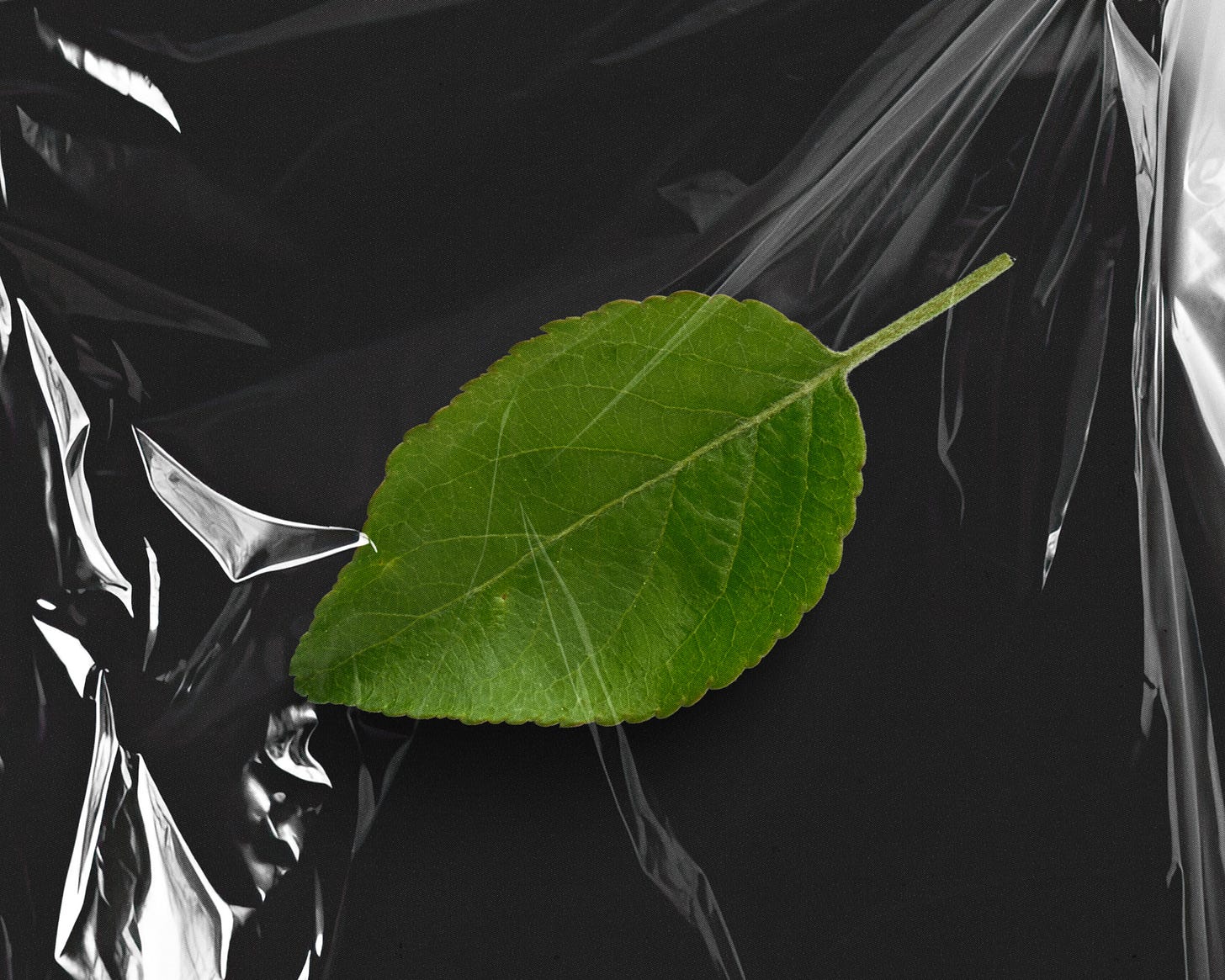


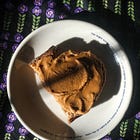


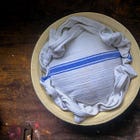
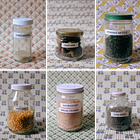

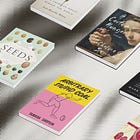

trader joe's usually sells produce bags if that's near to you! I grabbed them a few years ago and keep them in the bag I take to the farmers market.
I also love my Fellow mug for iced coffee because it has a little filter so ice doesn't tumble onto your face when you drink it.
Even just addressing all the plastics that touch food can feel like a lot. (But I’m glad we’ve phased out as much as we have.) this is impressive!!